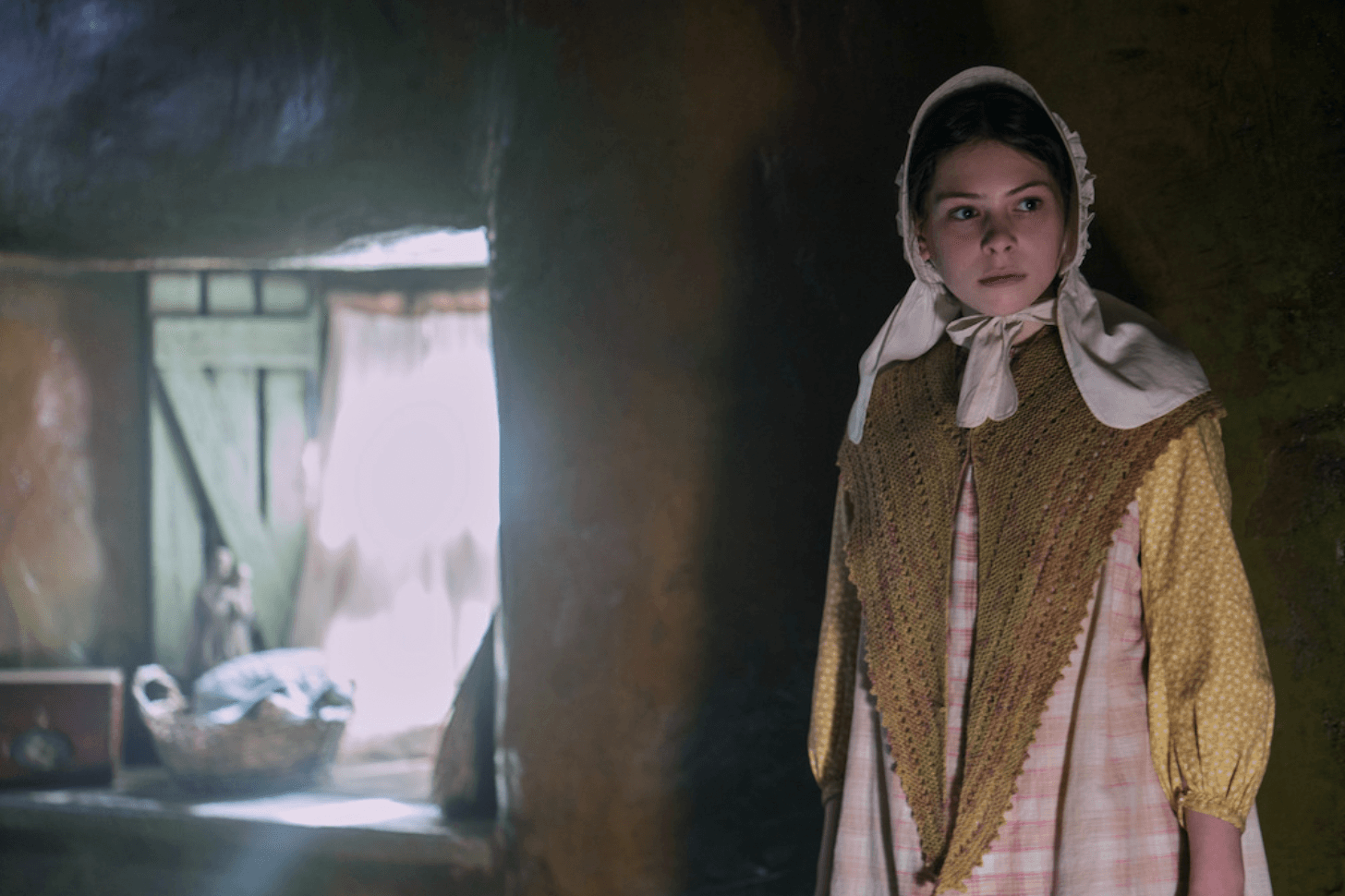

Share
16th November 2022
03:03pm GMT

 As her brother got sick, Anna was convinced that God was punishing him, and that she was responsible for his sins, a belief that was reinforced by her mother, who also blamed her for his death.
"Mammy said that it was my fault he had been taken," she says, tearfully.
Neither Donoghue or Leila have diagnosed Anna with Obsessive Compulsive Disorder (the novelist cited instances of 'fasting girls' as her initial inspiration) but those who suffer from the condition will no doubt recognise its symptoms in the character.
Anna is obsessed with the fate of her brother's soul, and she is compelled to save him through ritualistic prayer and fasting. Of course, this only results in Anna suffering further, putting her own life at risk.
As her brother got sick, Anna was convinced that God was punishing him, and that she was responsible for his sins, a belief that was reinforced by her mother, who also blamed her for his death.
"Mammy said that it was my fault he had been taken," she says, tearfully.
Neither Donoghue or Leila have diagnosed Anna with Obsessive Compulsive Disorder (the novelist cited instances of 'fasting girls' as her initial inspiration) but those who suffer from the condition will no doubt recognise its symptoms in the character.
Anna is obsessed with the fate of her brother's soul, and she is compelled to save him through ritualistic prayer and fasting. Of course, this only results in Anna suffering further, putting her own life at risk.
 As well as capturing the mechanism of OCD, Anna's experience illustrates other markers of the disorder. As the National Institute of Mental Health outlines, OCD often involves obsessions that are religious in nature, and many studies have found a correlation between childhood trauma and OCD.
The Wonder details how difficult the cycle of OCD can be to break. At one point, Lib desperately asks her mother to resume mouth-feeding her, but as this is one of Anna's compulsions, it would only strengthen the obsession further. Compulsive behaviours offer a temporary relief from the obsession, but it's not long until the cycle begins again. Her reassurances that Anna isn't responsible for her brother's death also fall flat. Instead, Lib saves Anna by convincing her that she is an entirely different person. This may speak to the way in which OCD attacks a patient's values, leaving them to truly believe that they are a monster, as Anna has done.
As well as capturing the mechanism of OCD, Anna's experience illustrates other markers of the disorder. As the National Institute of Mental Health outlines, OCD often involves obsessions that are religious in nature, and many studies have found a correlation between childhood trauma and OCD.
The Wonder details how difficult the cycle of OCD can be to break. At one point, Lib desperately asks her mother to resume mouth-feeding her, but as this is one of Anna's compulsions, it would only strengthen the obsession further. Compulsive behaviours offer a temporary relief from the obsession, but it's not long until the cycle begins again. Her reassurances that Anna isn't responsible for her brother's death also fall flat. Instead, Lib saves Anna by convincing her that she is an entirely different person. This may speak to the way in which OCD attacks a patient's values, leaving them to truly believe that they are a monster, as Anna has done.
 Of course, this intervention feels appropriate within the context of the film, but for those suffering from OCD, workable means of healing are available. According to the HSE, OCD can be treated through psychological therapy (understanding your OCD and learning new ways to cope) and, in some cases, through medicine (SSRIs).
Indeed, though it is perhaps not the intention of the filmmaker or writer, The Wonder succeeds in creating a resonant portrait of OCD and how it manifests, and this is note-worthy. Too often, depictions of OCD focus on cleaning rituals, or superstitions, that paint the patients as germaphobes. This has resulted in OCD becoming a buzzword, a euphemism for neat-freak. Thoughtful portrayals of the disorder, however, can allow those suffering from it recognise the elements of the disorder that receive less traction - the forbidden intrusive thoughts, the invisible compulsions and the way it targets a person's morality.
For more information on OCD, head to the HSE's website right here.
Of course, this intervention feels appropriate within the context of the film, but for those suffering from OCD, workable means of healing are available. According to the HSE, OCD can be treated through psychological therapy (understanding your OCD and learning new ways to cope) and, in some cases, through medicine (SSRIs).
Indeed, though it is perhaps not the intention of the filmmaker or writer, The Wonder succeeds in creating a resonant portrait of OCD and how it manifests, and this is note-worthy. Too often, depictions of OCD focus on cleaning rituals, or superstitions, that paint the patients as germaphobes. This has resulted in OCD becoming a buzzword, a euphemism for neat-freak. Thoughtful portrayals of the disorder, however, can allow those suffering from it recognise the elements of the disorder that receive less traction - the forbidden intrusive thoughts, the invisible compulsions and the way it targets a person's morality.
For more information on OCD, head to the HSE's website right here.
Explore more on these topics: